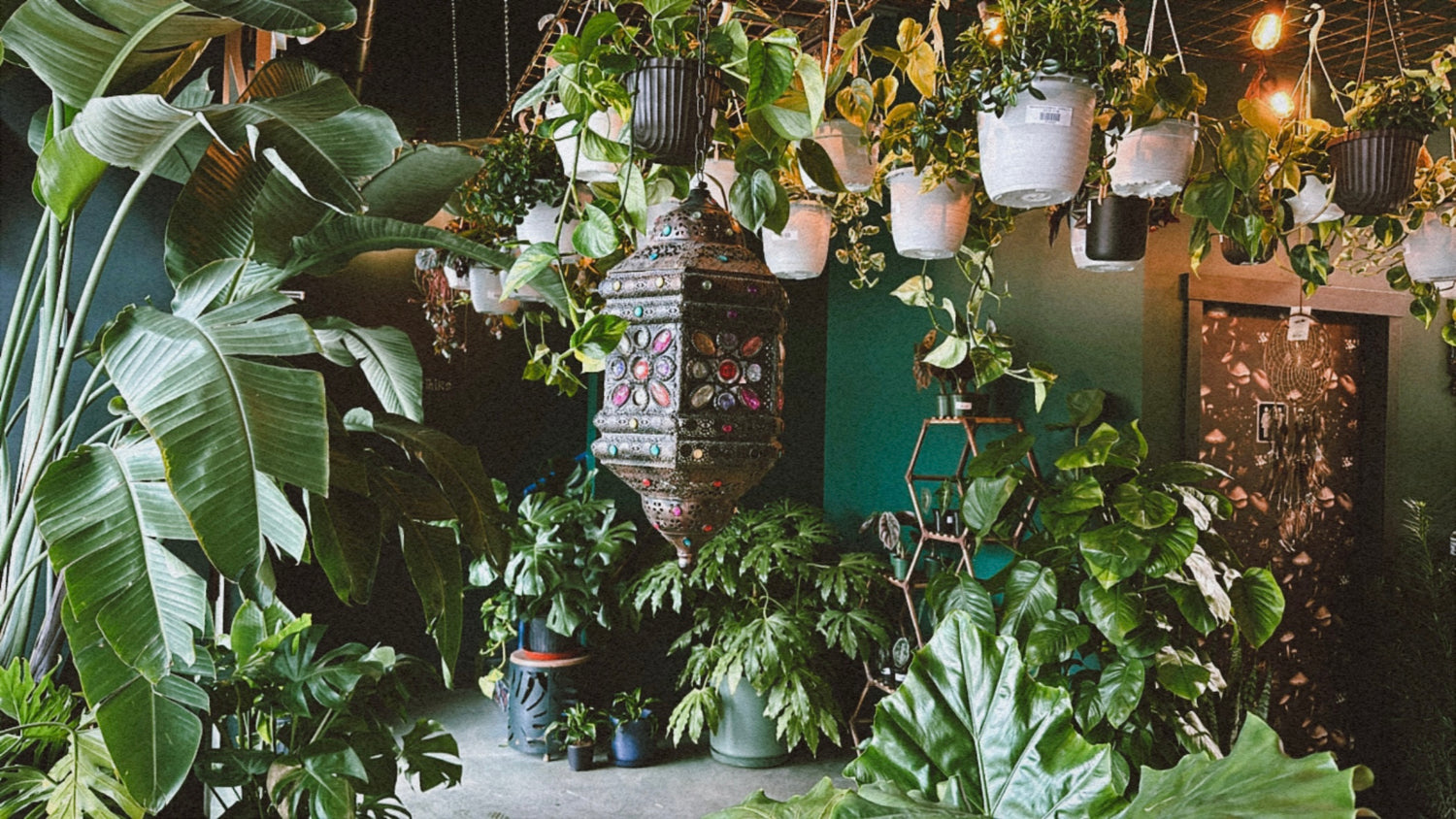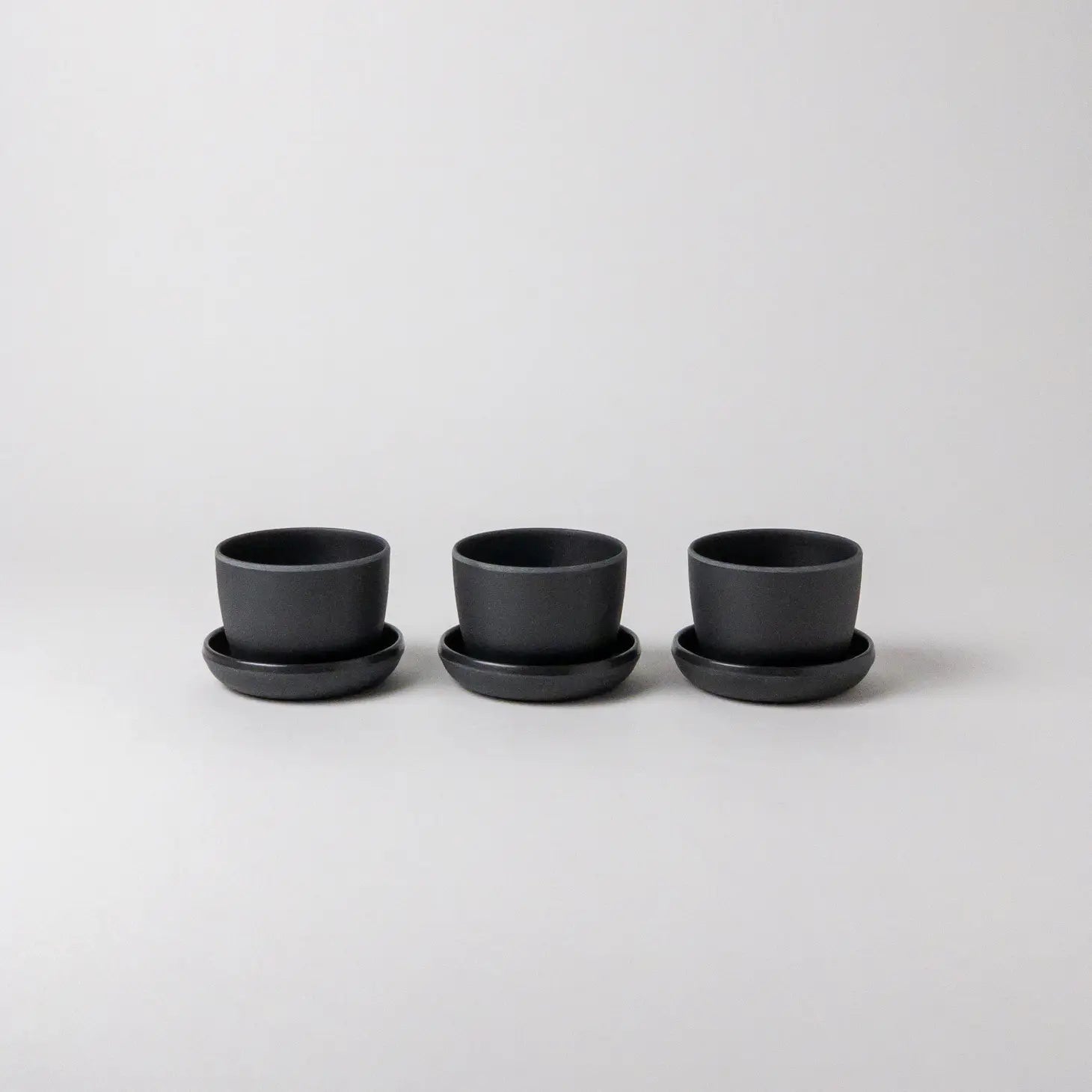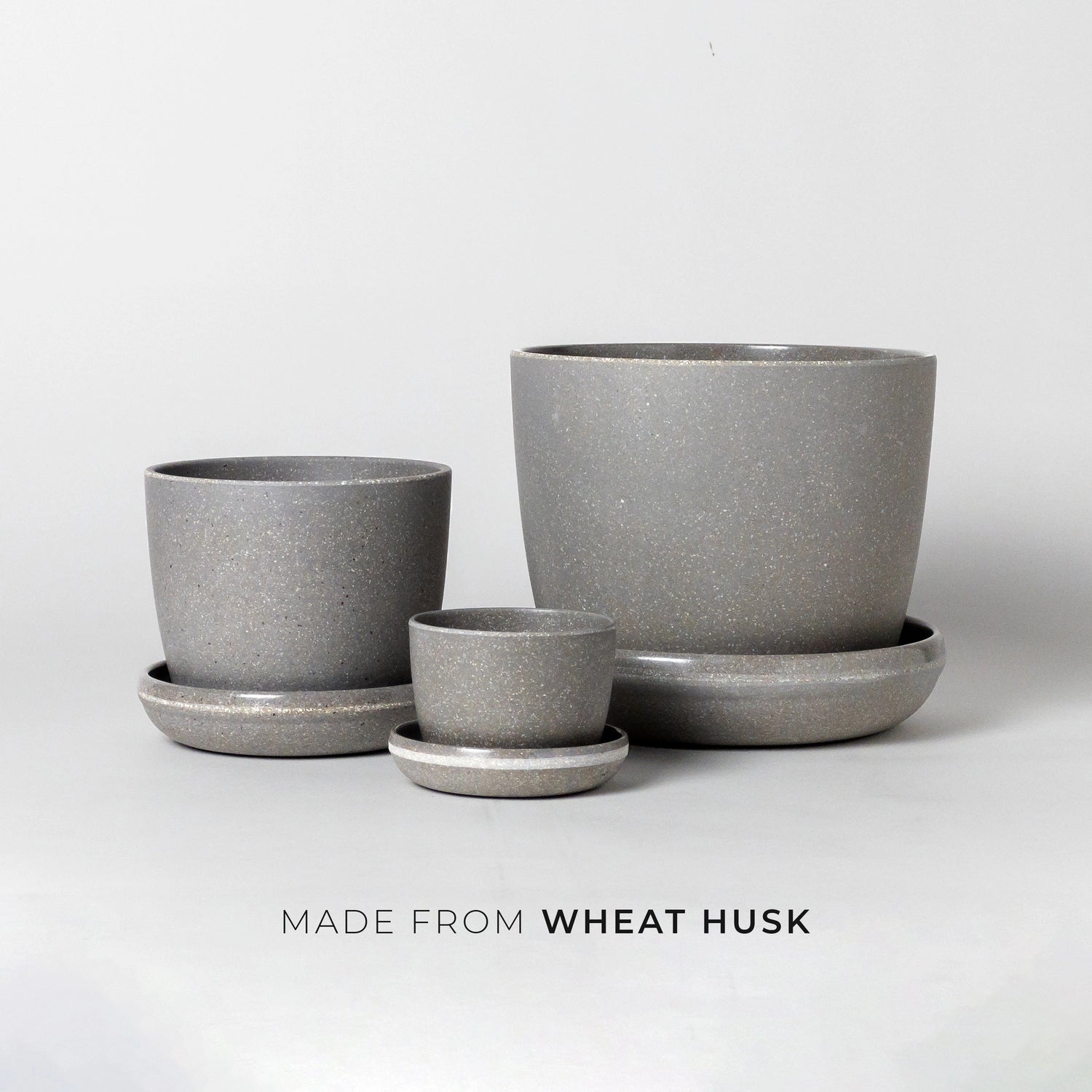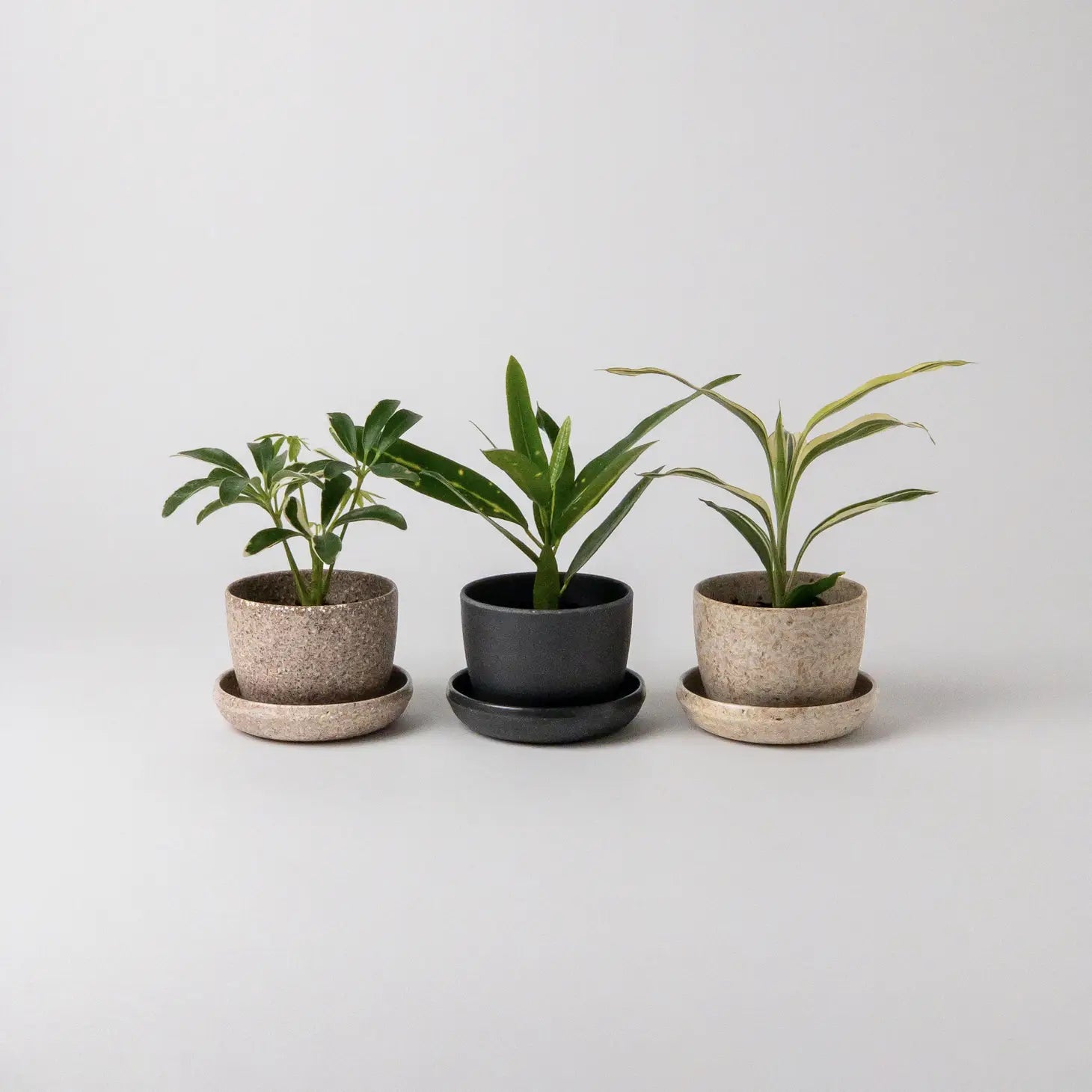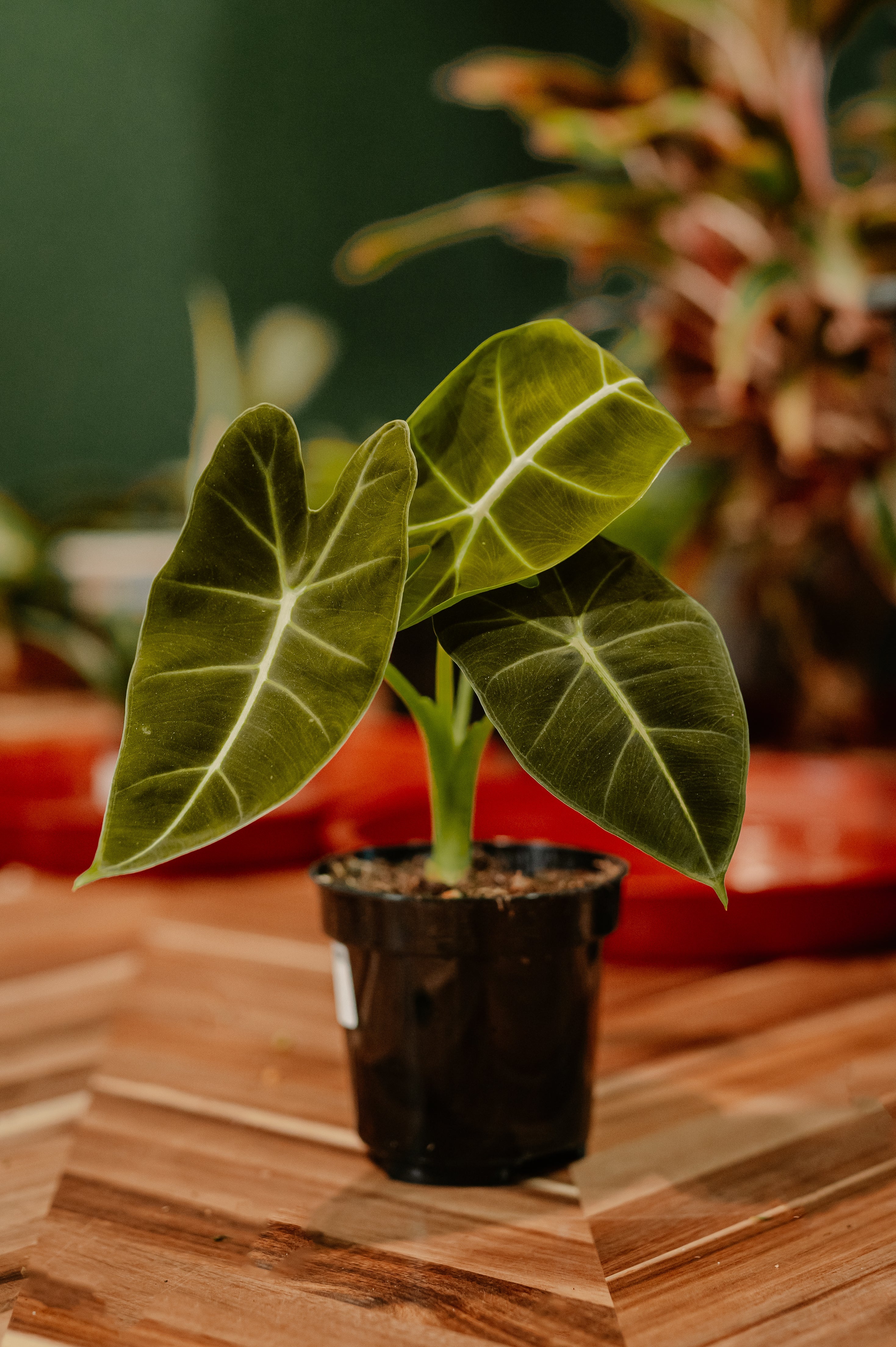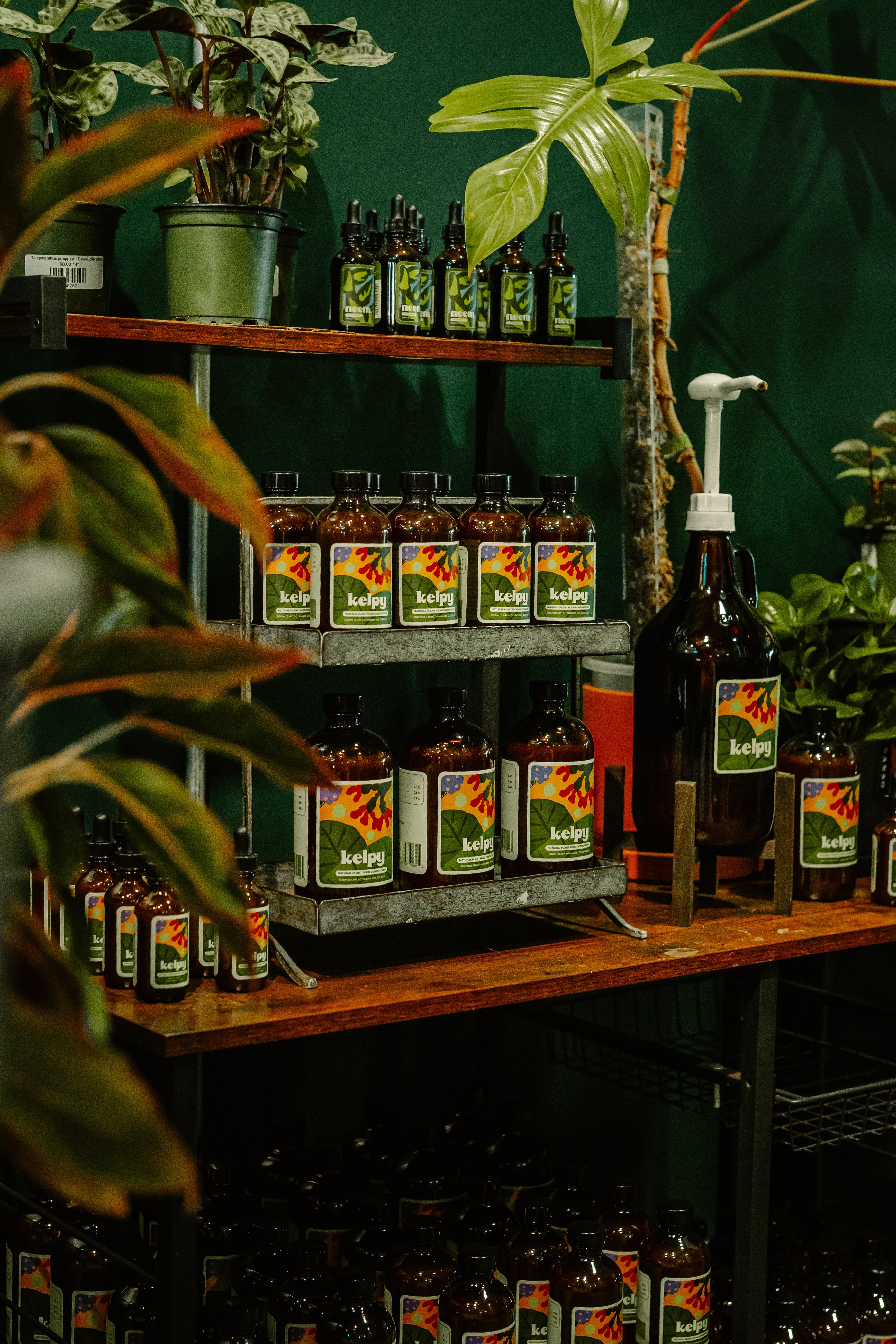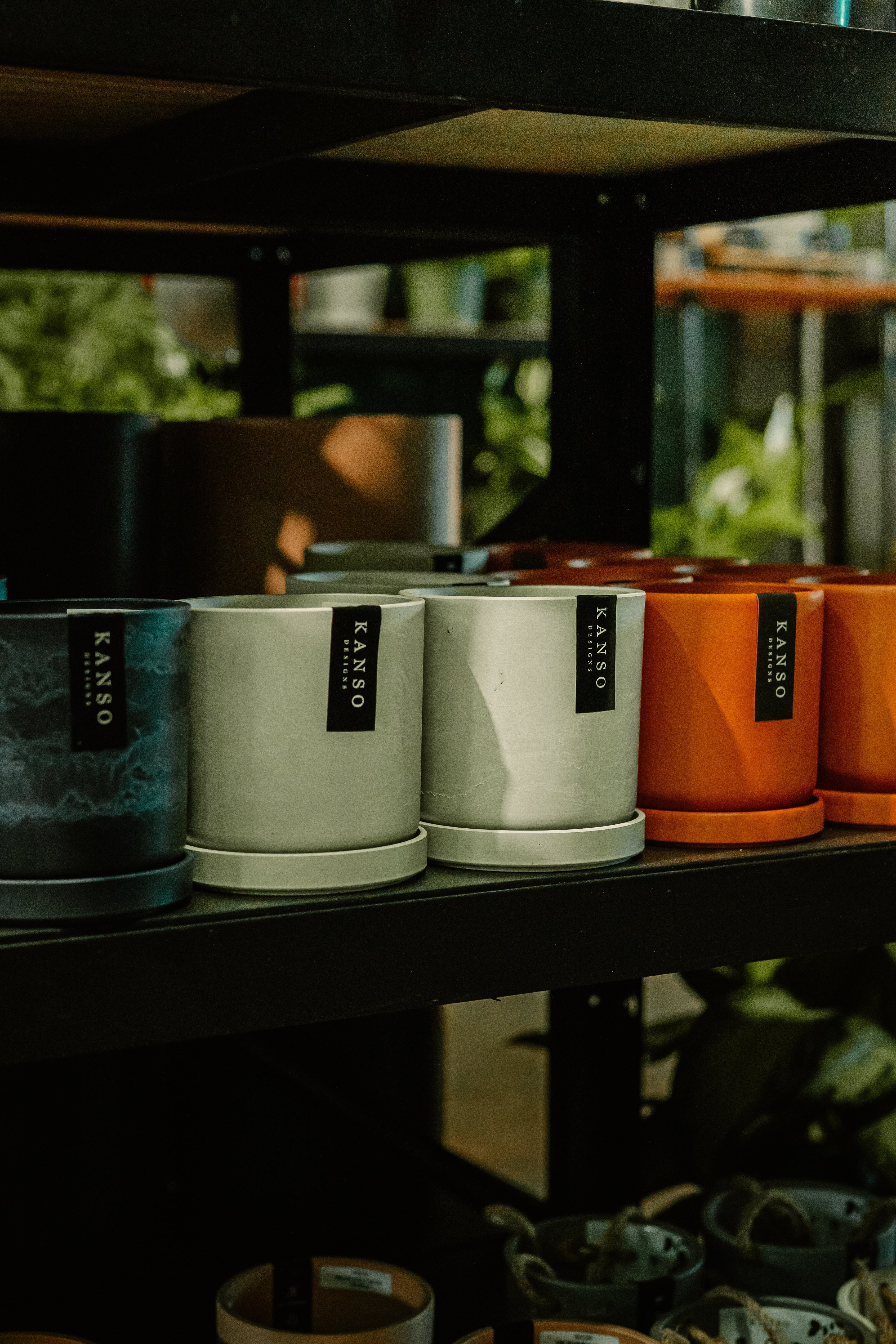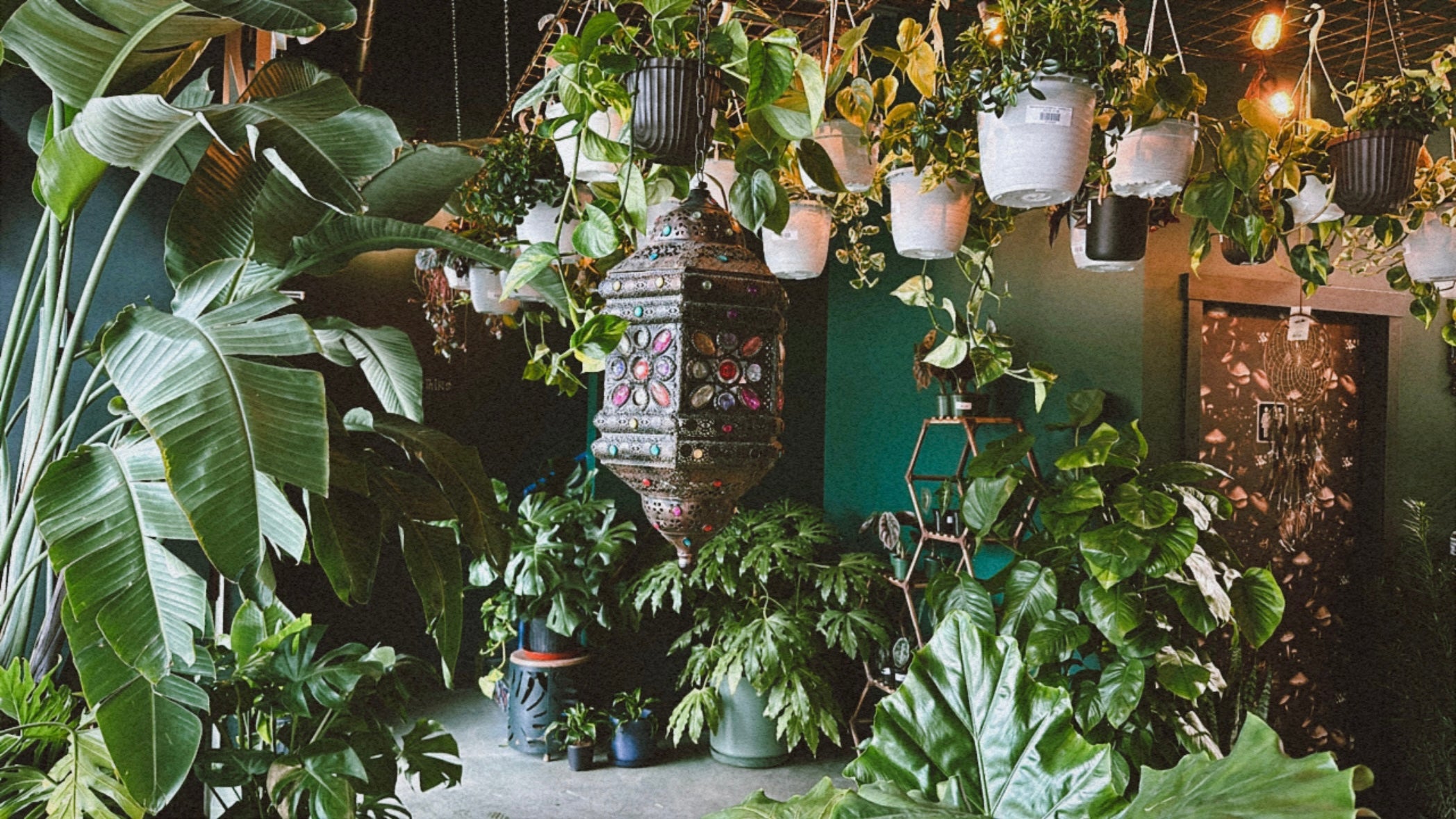All Plants & Decor
Visit us in-store for even more plant varieties
Sort by:
70 products
70 products
The Pothos is the king of easy growing. With its lush heart-shaped foliage this trailing vine will impress you with its ability to drape beautifully over a shelf or hanging basket and liven up any room. Although the Pothos enjoys plenty of indirect sunlight, they can also thrive comfortably in a low light environment and like many indoor plants, water when the top soil is dry to the touch. Being one of the easiest plants to grow this climbing devils ivy plant thrives on low light surroundings. To beautify your plant use containers with drain holes to drain excess water and keep your plant healthy. Indoor house plants are proven to be excellent air purifiers that removes pollutants and chemicals from the air for healthy living. Studies show that house plants can decrease stress and anxiety and stimulate creativity. Great for yourself or as a gift!
- Golden Pothos plants are among the most popular house plants for their versatility and easy care. Devils Ivy is a low-maintenance plant making it perfect for indoors or the perfect gift!
- The devils ivy can tolerate low levels or bright filtered light. Requiring water when dry to the touch, this climbing plant loves the idea of "less is more"
- The trailing vine will impress you with its ability to drape beautifully over a shelf or hanging basket and liven up the look of any room!
- Pothos are rated one of the best houseplants for removing indoor air toxins. Studies have shown live plants for your home improves your mood, sparks your creativity, and reduces stress, increasing productivity.
We are splashing a wave of silver onto the no-fuss, much adored Hoya Pubicalyx . Hoya pubicalyx is an evergreen perennial climber. This is a popular indoor plant native to the Philippines. The deep-green lanceolate succulent leaves, mottled with greyish speck patterns growing on purplish-grey stems make this plant a stunning addition to any collection.
Care
Light: Bright, indirect light is best for the optimal growth of the Hoya Pubicalyx plant. Choose an indoor position near a window that will provide plenty of indirect bright sunlight. The plant cannot tolerate direct sunlight combined with high heat, as it will scorch the flowers and leaves.
Water: The Hoya Pubicalyx is semi-succulent, so it can survive with minimal watering. You should maintain slight moisture in the potting soil, but thee plant can tolerate short dry periods because the semi-succulent vines are good at storing moisture. So even if you forget to water the plant once or twice, it still has some moisture stored to survive.
Temperature/Humidity: Can thrive in both lower and higher humidity conditions.
Soil/Potting: All Hoyas need to be potted in planters with drainage. These plants are very sensitive to too much water, so be sure to use a well draining soil with plenty of pumice and/or perlite. We suggest 1/3 peat, 1/3 perlite, and 1/3 orchid mix(bark, perlite, or charcoal). Good drainage and aeration are key! Hoyas don't mind being rootbound, it's said keeping your Hoya rootbound will accelerate blooming!
Care Tips: Prone to spider mites and mealy bugs dependent on environment and exposure. Never cut the long tendrils! Leaves and flower clusters develop from these.
Everything you love about the classic Carnosa, but with leaves lined in white and pink, in addition to the green. This beautiful tricolour Hoya variegates more as she grows, and sports a soft alternative (or partner) for the Krimson Princess.
Care
Light: Bright, indirect light is best for the optimal growth of the Hoya Carnosa Krimson Queen plant. Choose an indoor position near a window that will provide plenty of indirect bright sunlight. The plant cannot tolerate direct sunlight combined with high heat, as it will scorch the flowers and leaves.
Water: The Hoya Carnosa is semi-succulent, so it can survive with minimal watering. You should maintain slight moisture in the potting soil, but thee plant can tolerate short dry periods because the semi-succulent vines are good at storing moisture. So even if you forget to water the plant once or twice, it still has some moisture stored to survive.
Temperature/Humidity: Prefers high humidity.
Soil/Potting: All Hoyas need to be potted in planters with drainage. These plants are very sensitive to too much water, so be sure to use a well draining soil with plenty of pumice and/or perlite. We suggest 1/3 peat, 1/3 perlite, and 1/3 orchid mix(bark, perlite, or charcoal). Good drainage and aeration are key! Hoyas don't mind being rootbound, it's said keeping your Hoya rootbound will accelerate blooming!
Care Tips: Prone to spider mites and mealy bugs dependent on environment and exposure. Never cut the long tendrils! Leaves and flower clusters develop from these.
Philodendron Birkin is a stunning plant varieties that develops pure white pinstripes on its foliage, growing evermore variegated as the plant matures. Their unique variation shifts from leaf to leaf, and it’s not uncommon to notice occasional splashes of pink or light red on new leaves as they unfurl. They perform best in bright, indirect light and love a moisture-rich environment and well-hydrated soil in pot with proper drainage.
Care
Light: Philodendrons do well in a range of light conditions. They prefer moderate to bright indirect light, but can tolerate shadier lighting conditions as well. Avoid direct sunight.
Water: Keep the soil moist at all times. Allow the top of the soil to dry out slightly before re-watering. Will tolerate some degree of drought better than having its roots too wet.
Temperature/Humidity: Average to warm household temperatures from 18-28°C and short periods down to 12°C at an absolute push. Avoid cold draughts. Comfortable in average household humidity.
Soil/Repotting: Well draining, nutrient rich potting soil.
Care Tips: Wipe leaves with a damp cloth to remove accumulated dust. Please note, leaves can develop yellow patches after a change in temperature or environment. These can be removed at the base of the stem if required
*Philodendrons are toxic to cats and dogs. Do not consume*
Philodendrons were part of NASA clean air study and found effective in improving indoor air quality by removing formaldehyde.
Care
Light: Philodendrons do well in a range of light conditions. They prefer moderate to bright indirect light, but can tolerate shadier lighting conditions as well. Avoid direct sunlight, prone to sunburn. Since the cell mutation is unstable ( what we see as colour variations) by placing your ppp in bright indirect light for at least 8 hours and providing higher humidity 65%+, you may be able to increase some variegation. In shadier locations, your pink princess may need to produce more chlorophyl (the green stuff that photosythizes) so the variegation may be less.
Water: Water well and let soil dry out almost completely. Your plant will tell you when it is thirsty with dull or droopy leaves, yellowing leaves, or the soil starts to detach from the edge of the pot.
Temperature/Humidity: Average to warm household temperatures from 18-28°C and short periods down to 12°C at an absolute push. Avoid cold draughts. Comfortable in average household humidity but will thrive in higher humidity.
Soil: We suggest planting in a chunky well draining aroid mix consisting of our orchid mix, perlite, and pumice. You can also add in some worm castings and charcoal.
Care Tips: Most philodendrons are epiphytes and will thank you with big leaves if you provide them a moss pole to climb. Wipe leaves with a damp cloth to remove accumulated dust. Feed with Kelpy Plant Food or Plant Vitamins Thrive.
*Philodendrons are toxic to cats and dogs. Do not consume*
Philodendrons were part of NASA clean air study and found effective in improving indoor air quality by removing formaldehyde.
All photos are an indication of the plant species and size reference only. All plants will have slight variations in coloring and condition. Decorative pot not included. Plants will be shipped in sphagnum moss or perlite.
This simple, yet elegant beauty comes by many names including the Alocasia Micholitziana, Green Velvet, and Frydek. The mature, broad, velvety dark green leaves have striking white veins making this plant a real beauty. The juvenile leaves appear as bright lime-green which especially showcase the eye-catching iridescent finish on the leaves.
Care
Light: Bright, indirect light is preferable. May loose it's green color or burn in direct light or too much light.
Water: Allow the top two inches of soil to dry before watering, do not let sit in excess water as they are quite prone to root rot. Your plant will let you know when it is thirsty. Watch for dull looking leaves, drooping stems, leaf curl, and a super lightweight pot.
Temperature/Humidity: Your Alocasia will not tolerate temperatures lower than 13 Celsius and dislikes both cold and hot drafts. A minimum of 50% humidity is suggested to prevent foliage issues and allow your plant to thrive, but your Alocasia Frydek may tolerate slightly lower humidity. You can group plants together to increase humidity or set your plant on a tray of pebbles with water. Try to avoid misting your plant especially when new leaf development is occurring, this will prevent leaf rot and other plant disease.
Soil/Potting: These plants prefer to be root bound and repotting can be quite traumatic for them. We prefer to use a chunky, free draining soil and typically mix two parts each of perlite and orchid bark to one part potting soil. Feed your alocasia bi weekly during growing season.
Care Tips: Try to imagine where your plant came from in the wild and try to replicate that environment in your home. Your Alocasia will thrive in a humid environment, and a chunky well draining soil mix. Experiment with different locations in your house to find the best location for your plant. Try feeding your Alocasia with Kelpy or Plant Vitamins.
*Alocasias are mildly toxic to pets and humans. Typically, ingestion will cause mouth and stomach irritation and possible vomiting. Do not ingest.*
*Please note that your Alocasia may loose a leaf or two once you receive it. Alocasia plants need time to acclimate to their new environment. If the humidity, light, and temperature is not up to 'their' standards they may only be able to produce or hold onto 2-3 leaves at a time.*
All photos are an indication of the plant species and size reference only. All plants will have slight variations in coloring and condition. Decorative pot not included. Plants will be shipped in sphagnum moss or perlite.
Our organic neem oil is extracted from the fruit kernels of the neem plant.
Organic cold-pressed neem oil. (azadirachta indica)
Shake well before using. Mix 1 dropper of Neem, several drops of dish soap and 500 mL of water in a spray bottle. Shake spray bottle throughout the spraying process to prevent the oil and water from separating.
The unforgettable Black Velvet Alocasia (Alocasia reginula), or Little Queen, is exotic and elegant, with silver veins that shine against the broad leaf’s dark, velvety background. The Black Velvet’s standout feature is dark leaves and prominent pale green, white, or silver veins. Its thick, succulent-like leaves are heart-shaped and have a velvety look and stiff texture. The leaves grow about six inches long and two-and-a-half inches wide.
Care
Light: Bright, indirect light is preferable for your black velvet, but is more tolerant of lower light than many other aroids.
Water: Allow the top two inches of soil to dry before watering, do not let sit in excess water as they are quite prone to root rot.
Temperature/Humidity: Your velvet darling will not tolerate temperatures lower than 13 Celsius and dislikes both cold and hot drafts. A minimum of 40% humidity is suggested to prevent foliage issues, but your Alocasia will thrive best in 60% to 75% humidity.
Soil/Potting: These babies prefer to be root bound and repotting can be quite traumatic for them. We prefer to use a coarse, free draining soil and typically mix two parts each of perlite and orchid bark to one part potting soil. Feed monthly with a balanced fertilizer.
Care Tips: Humidity and a consistent watering schedule will keep this beauty's sensitive leaves from curling and browning. She is prone to sunburn when offered direct sun, experiment with the Black Velvet's location to find a good balance . Prone to Fungus Gnats and Spider Mites.
*Alocasias are mildly toxic to pets and humans. Typically, ingestion will cause mouth and stomach irritation and possible vomiting. Do not ingest.*
All photos are an indication of the plant species and size reference only. All plants will have slight variations in coloring and condition.
The Dragon Tail (rhaphidophora decursiva) is an alluring beauty that just gets better the longer you look at it. Their smooth, waxy leaves show light ridges, that one day will become stunning splits, resembling a monstera leaf. This plant can climb by means of aerial roots that adhere to surfaces. Mature leaves up to 30-50cm long are thick and leathery and are deeply incised along the margins, fanning out similar to the Monstera Pinnatipartita, but much more sleek and shiny.
Care
Dragon Tails are drought resistant, but will grow well with a maintained watering schedule. Water when top inch of soil is dry, but thankfully this beauty isn’t all to bothered if you forget by a day or two.
All photos are an indication of the plant species and size reference only. All plants will have slight variations in coloring and condition. Decorative pot not included. Plants will be shipped in sphagnum moss or perlite.

